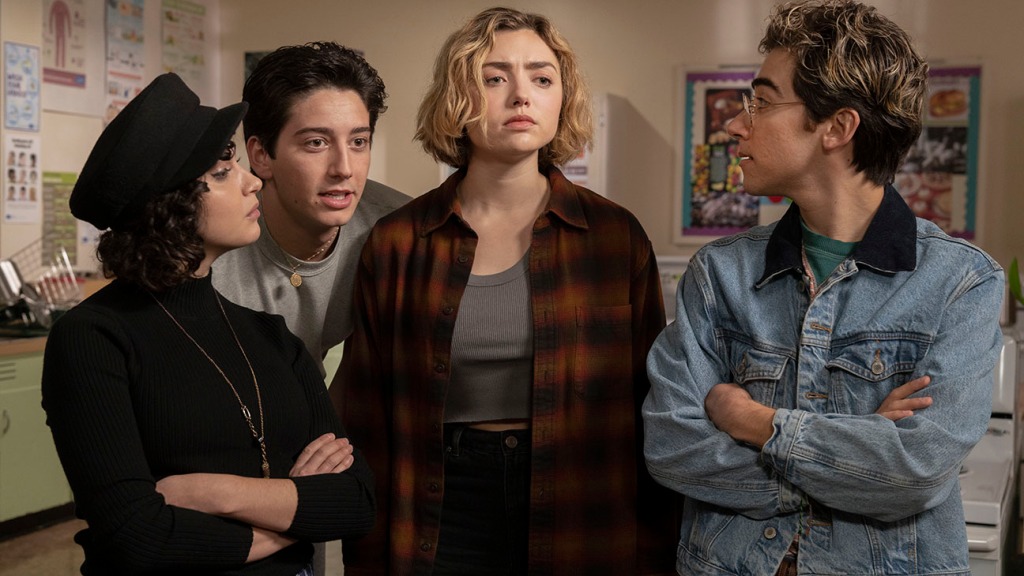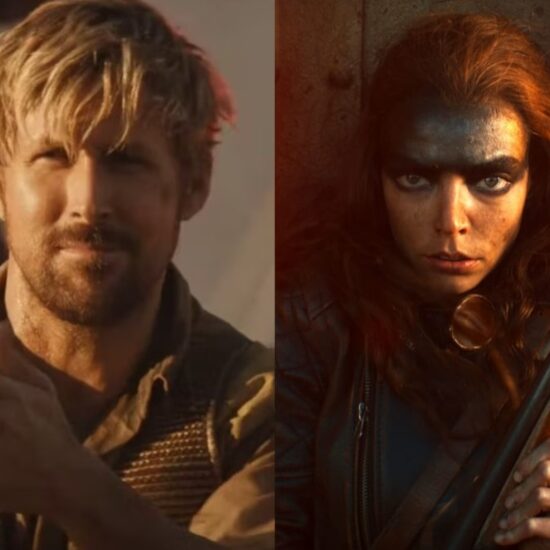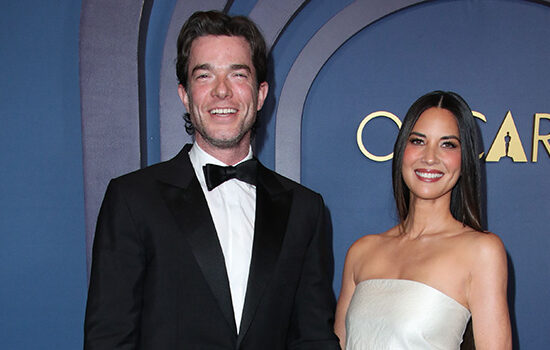
Chances are good that, if you know me in the real world, you’ve heard me repeat/paraphrase/mangle the Samuel Johnson quote, “[W]hen a man is tired of London, he is tired of life.” I believe that deeply.
Allow me to mangle/paraphrase the quote further, because while Johnson never said, “[W]hen a man is tired of ghosts, he is tired of the afterlife,” I’m beginning to believe that I am, indeed, suffering from ghost fatigue. Which is not, in fact, a less appreciated Mission: Impossible sequel.
School Spirits
The Bottom Line
I ain’t afraid of no ghosts, just a bit tired of ’em.
The show with the poor fortune to trigger this growing apparition-apathy is Paramount+’s middling boo-dunnit School Spirits. But it could just as easily have been ABC’s middling comedy Not Dead Yet or a mini-marathon of CBS’ Ghosts or lingering memories of last summer’s instantly forgotten (but actually better than middling) Netflix series Boo, Bitch. On television, ghosts solve crimes, write obituaries and generally serve as facilitators for the living. Other than trend-chasing, there’s very little reason for most TV ghosts to even be ghosts at all. In particular, what nobody has been able to do, at least in this recent vintage of Peak Phantasm TV, is offer up a version of the Great Beyond that is aesthetically or spiritually interesting in the slightest.
School Spirits boasts hints of clever dialogue, a mystery that, if nothing else, isn’t easily solvable within the first three episodes sent to critics, and a decent lead performance from Peyton List (the Cobra Kai vintage, not the former Mad Men co-star). What it can’t do is emerge as anything more distinctive than a bland blend of the aforementioned Boo, Bitch and Netflix’s 13 Reasons Why, a show that didn’t feature a literal ghost but was surely driven by a metaphorical ghost. It’s an afterlife after-school special.
Adapted by Nate Trinrud and Megan Trinrud from their upcoming graphic novel, School Spirit begins with List’s Maddie already deceased. To her fellow classmates, Maddie is just missing, which upsets her still-living friends Simon (Kristian Flores) and Nicole (Kiara Pichardo), as well as her bad-boy boyfriend Xavier (Spencer MacPherson), who becomes an immediate suspect in her disappearance.
Maddie doesn’t know how she died or where her body is, but she knows she’s dead because she finds herself hobnobbing with the surprisingly large assortment of ghosts occupying the halls at Split River High — and ghosts, we’re immediately told, can’t speak directly to anybody who’s living. Unless they can. [Hint: It wouldn’t be much of a show if they couldn’t.]
As befits TV convention, the high-school ghosts are trapped in some sort of limbo. They died at or around the school, which may be why they can’t leave? And they can’t change their clothes, so they’re forever trapped representing both the character archetype and the time of their demise. There’s a jock from the ’80s (Milo Mannheim’s Wally), a grouchy girl from the ’50s who may be dressed like somebody’s idea of a stereotypical beatnik (Sarah Yarkin’s Rhonda) and a ’60s or ’70s hippy (RaeAnne Boon). If this conceit is already sounding a LOT like Ghosts, well, it is.
The ghosts attend daily counseling sessions run by Mr. Martin (Josh Zuckerman) and they dream of someday ascending or something, though nobody exactly understands the process. The overall symbolism is made clear to Maddie by her handy tour guide Charley (Nick Pugliese), a gay ghost from the ’90s, who says: “It’s just moving from one prison to another. Only difference is that high school used to feel like an eternity and now it actually is.” A good idea, overexplained and underexplored.
For some reason, the show doesn’t approach this as an existential nightmare. Instead, it’s just this boring place everybody is trapped and so they respond mostly by being pervs. They loiter in locker room showers, surrounded by naked living teens, and they apparently spend a lot of time peeping in the bathroom. As Charley also puts it, “If you’re looking for it to make sense, you can stop. It’s not going to,” which isn’t the attitude I want from my supernatural drama, even if it tracks with the execution.
Is this appropriate for a premise primarily built around teenage ghosts? I suppose so. Does part of me still aggressively wonder how TV’s recent run of ghost and ghost-adjacent shows have removed any trace of religion — or “faith,” if you prefer something less structured —from the afterlife? Yeah. Not everything needs to be Touched by an Angel, all treacly religion, or the second season of Russian Doll, in which Jewish mysticism is smartly woven throughout. There’s a large expanse between “saturation” and “absolutely nothing” when it comes to life after death, a concept that is deeply tied to belief systems in the real world, but not on television. And don’t get me started on the visual blandness and even claustrophobia that can set in on a show in which nearly every bit of the action is set in and around a generic high school that the living and dead perceive identically.
In concept, the afterlife seems like a boundless and marvelous thing. School Spirits makes it small and uninspired. There are traces of undead rules and motivations that might be interesting — Charley’s backstory strikes the show’s only emotional chord, while the ghosts’ “field day” delivers its only real amusement — but those things take a backseat to Maddie trying to cross the border around the school and being cosmically returned, face-first, to the boiler room over and over and over again.
The show’s primary question is who murdered Maddie, though, despite the character’s allegedly encyclopedic interest in genre movies, she has little ability to play ghostly gumshoe. I appreciate punny episodic titles like “My So-Called Death” and “The Fault in Our Scars” — to thumb my nose at such wordplay would be fiercely hypocritical — but I wish more of the show’s myriad pop culture references were more than just that, references. Most of the amusement implied by the episode titles is concentrated in the pilot, before the show starts taking its plot, if not its mythology, very seriously.
The mystery is driven by the writers withholding information, not by anything truly twisty, though Patrick Gilmore and Ian Tracey are good as a couple of the grown-ups who are presented as too sketchy too early on to be anything other than red herrings. That means that after three episodes, I don’t have a clue who killed Maddie or where her body is, and I may mean that literally — as in, viewers haven’t been given enough clues to build theories.
Maddie isn’t an especially consistently written character, but List gives her a scrappy attitude and, in Maddie’s believable annoyance with her situation, offers viewers the freedom to be annoyed as well. The only note in Maddie’s backstory that has any resonance is her alcoholic mother, played by Maria Dizzia with an intensity that’s believable without aligning with anything else in the show.
Too many of the supporting roles are interchangeable — several of the ghosts serve an identical purpose and lack voices that match their thin basic descriptions — or underwritten. If we’re supposed to invest in a single one of the show’s relationships — living or spectral, romantic or otherwise — I haven’t latched on yet. There’s actually some audacity in a show like this aimed at young viewers that doesn’t offer even a whiff of “shippable” chemistry between any of the characters.
Sometimes the familiar trappings of the high-school genre can open the door for a show to do wilder and more inventive things than more allegedly mature shows. School Spirits, unfortunately, takes no such liberties.













